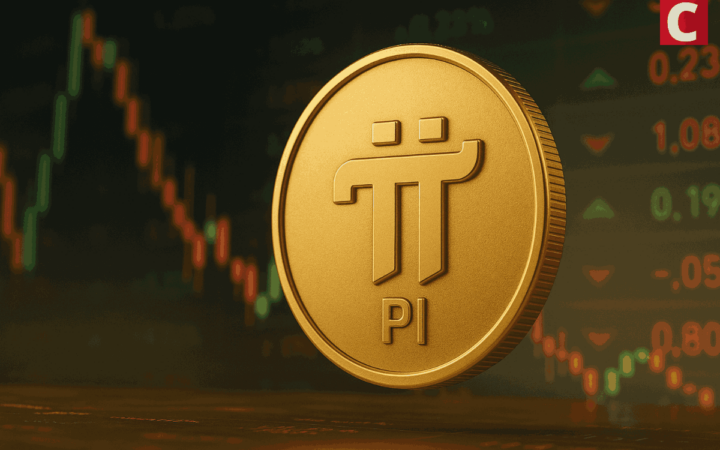After years of uncertainty and regulatory pressure, the United States has re-emerged as one of the most promising environments for digital assets.
According to a16z’s State of Crypto 2025 report, the world’s largest economy is entering a new era of clarity, confidence, and capital inflows, signaling that crypto’s center of gravity is once again shifting back to U.S. soil.
From Hostility to Leadership
Just two years ago, the American crypto landscape was defined by enforcement actions, confusion, and hesitation. Many projects relocated offshore to escape unclear rules, and venture funding for U.S.-based blockchain startups plummeted. But 2025 has marked a dramatic reversal.
The bipartisan GENIUS Act, combined with the CLARITY Act, has transformed the tone of U.S. policy toward crypto. Together, these laws provide a structured framework for stablecoins, market oversight, and digital asset classification. The legislation has brought long-awaited predictability to how crypto companies operate – a critical factor for innovation and capital formation.
Complementing these legislative milestones, Executive Order 14178 reversed earlier restrictive measures, mandating federal agencies to coordinate on pro-innovation digital asset policies. A cross-agency task force was established to modernize how government systems interact with blockchain-based infrastructure, creating channels for collaboration rather than confrontation.
a16z notes that this environment has reignited builder optimism across the country. The U.S. is once again seen as a viable home for blockchain development, startup formation, and institutional deployment of crypto products.
Capital and Talent Return Home
With the legal fog lifting, capital is flowing back into U.S.-based blockchain ventures. Venture firms, hedge funds, and corporates have resumed large-scale investments in crypto startups and infrastructure providers. According to the a16z report, several major financial players – including JPMorgan, Fidelity, and Mastercard – have expanded their blockchain divisions, hiring engineers and product managers to develop payment systems, custody solutions, and tokenized financial instruments.
Tech giants that once distanced themselves from crypto are also re-engaging. PayPal, Stripe, and Square have all deepened their integration with stablecoin payment systems and Web3 wallets. Meanwhile, public companies like Coinbase, Marathon, and Galaxy Digital continue to serve as examples of U.S.-regulated crypto enterprises operating at scale.
Perhaps most tellingly, the venture ecosystem is showing early signs of revival. a16z’s own investments, along with those from other major funds like Paradigm and Pantera Capital, have concentrated heavily on U.S.-based teams building tools for DeFi, AI-integrated protocols, and onchain infrastructure.
The Economic Engine of Tokenization
The report emphasizes that regulatory clarity has enabled a new wave of tokenized financial products to emerge. With clearer rules around asset-backed tokens, companies can now issue digital representations of equities, treasuries, and private credit instruments onchain.
This is not merely a technical upgrade – it’s a structural transformation. The tokenization of real-world assets (RWAs) is already reshaping how capital markets function. Startups and institutions are experimenting with tokenized bond markets, yield-bearing stablecoins, and digitally native treasuries that settle in seconds rather than days.
Such innovation, a16z argues, is turning the U.S. into a testbed for the next generation of global finance. Whereas the previous decade saw the rise of centralized crypto exchanges, the coming decade may be defined by tokenized capital markets operating with full regulatory oversight.
The implications are far-reaching: as more tokens generate real economic value – through fees, staking, or smart contract revenue – the American crypto ecosystem could evolve into a self-sustaining digital economy with transparent cash flows and accountable governance.
A Foundation for the Next Cycle
a16z’s analysis highlights that the new U.S. policy framework doesn’t just benefit startups and investors – it stabilizes the broader global crypto market. When the U.S. leads with clear standards, it sets the tone for other nations, creating a unified foundation for digital asset interoperability and regulation.
This leadership is especially important as the industry moves into its next phase: integrating blockchain with emerging technologies like artificial intelligence and decentralized infrastructure networks (DePIN). The U.S. regulatory environment, once perceived as a major obstacle, now stands to accelerate this convergence by encouraging both public and private sector collaboration.
The firm’s report characterizes this shift as “crypto’s comeback moment in America.” Builders who once left the country are returning, startups are registering locally instead of abroad, and major exchanges are expanding rather than retreating. Venture inflows are once again matching levels seen before the 2022 downturn.
A Renewed American Role in Crypto’s Global Future
The United States’ re-engagement in crypto marks a turning point not just for domestic policy but for the global digital asset landscape. With the passage of progressive legislation and the re-establishment of a dialogue between regulators and innovators, America is regaining its status as a central hub for blockchain advancement.
If current trends hold, a16z predicts that the U.S. could become the largest market for regulated tokenized assets within five years. Stablecoins, DeFi products, and tokenized treasuries could drive billions in daily volume under a compliant framework that balances innovation and consumer protection.
In a sense, the U.S. has rediscovered its original role in the digital revolution: not as a gatekeeper, but as a catalyst. By replacing uncertainty with clarity, and hostility with collaboration, the country has positioned itself to lead the next wave of crypto innovation – and perhaps the next era of global finance itself.
The information provided in this article is for educational purposes only and does not constitute financial, investment, or trading advice. Coindoo.com does not endorse or recommend any specific investment strategy or cryptocurrency. Always conduct your own research and consult with a licensed financial advisor before making any investment decisions.
AuthorRelated stories
Next article
Source: https://coindoo.com/2025-marks-the-year-america-became-crypto-friendly-again/


